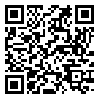BibTeX | RIS | EndNote | Medlars | ProCite | Reference Manager | RefWorks
Send citation to:
URL: http://erj.khu.ac.ir/article-1-22-en.html
One of the main issues to be considered in the educational system is education. Education is the result of four elements which are interacting with each other. These four elements are: teaching, learning, structure and curriculum. Curriculum is a plan for action which forms the structure. Another issue is the status of knowledge and the way we can transform it into educational materials. In postmodern education, knowledge itself is not the target, and the “knowledge constructive discourse” is rather a target. For this reason the main concentration in the classrooms are on knowledge construction, understanding, cooperation and collaboration. The educational systems of the countries have to reconsider the targets, contents, materials, methods and also the educational opportunities and activities in order to educate independent and flexible students who have creative thinking. Curriculum planning and presenting various issues have been done for a long time. In early twentieth century, the scholars in education and training stepped into the realm of integrated curriculum. But the dominated trend in this century has been based on single discipline approach, plurality of subjects, and Discipline-based curriculum. Integration means making compatibility and coming together which is in contradiction with specializing and separating courses. Integration is based on holistic view which tries to make relations between education and daily life. The present study aims to explain integrated curriculum, declare the types of it, and the way to integrate science and technologies in the primary school courses. This research enjoys analytical- inductive methodologies. In this way, first we declare the curriculum and explain integration, and then we refer to the samples of integration in area of content, like integration of fundamental issues and knowledge, and integration of information technology and communication with all areas of knowledge. Based on the studies and analysis, we can conclude that: integration of science and technology with curriculum in general and specifically in primary education, the learning rate and the possession of students on organized content will increase and students can work out what they have learnt in real life.
Received: 2016/04/3 | Revised: 2021/11/13 | Accepted: 2016/04/3 | ePublished: 2016/04/3
| Rights and permissions | |
 |
This work is licensed under a Creative Commons Attribution-NonCommercial 4.0 International License. |






